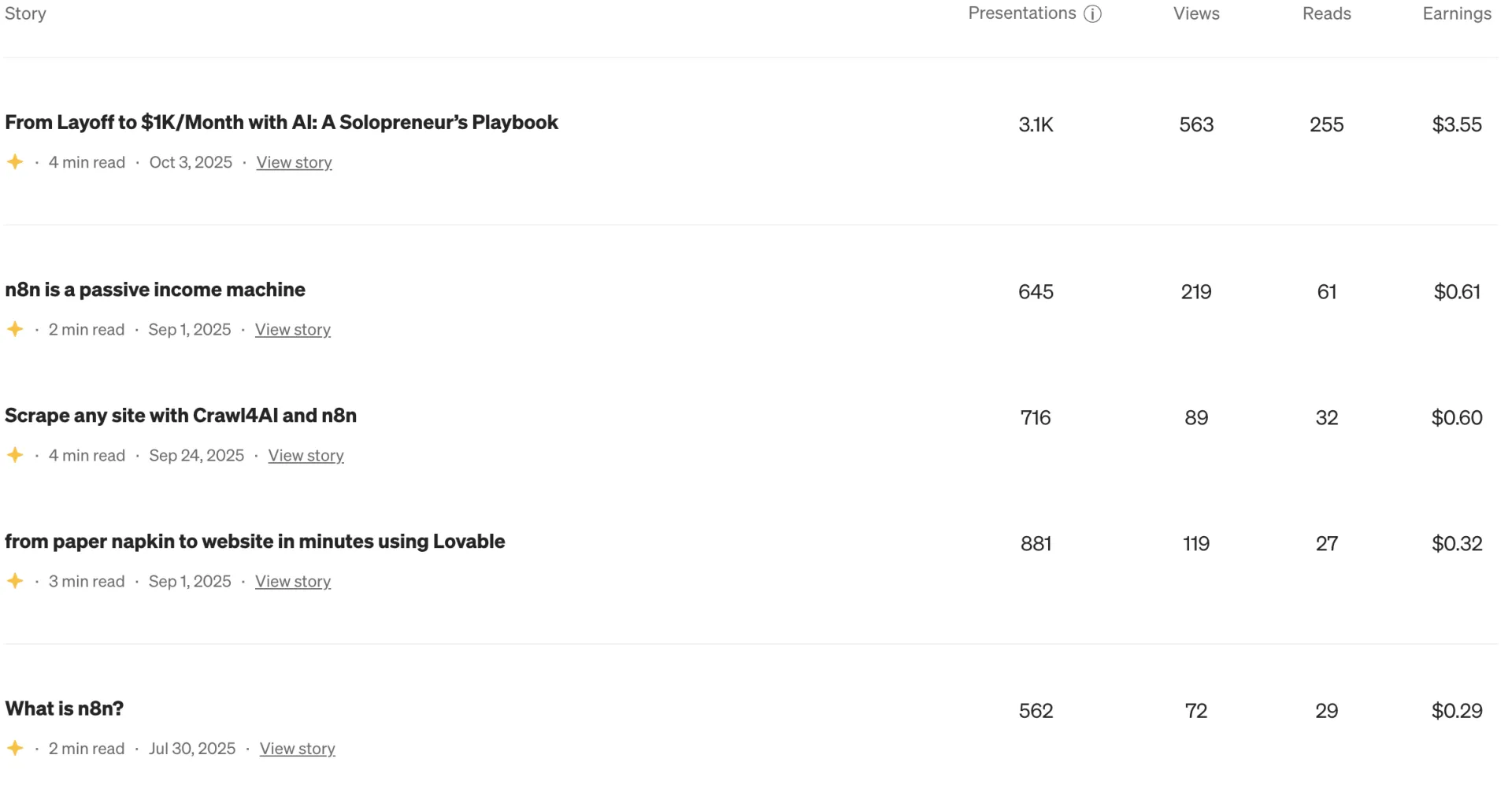Install Huzzler App
Install our app for a better experience and quick access to Huzzler.
Join the Huzzler founder community
A community where real founders build together. No fake gurus, no AI spam.
Join 2,320 founders
Huzzler is a strictly AI-free community
No fake MRR screenshots. Stripe-verified revenue only
Real advice from founders who've actually built
Network with serious builders, not wannabes
The Rice Purity Test remains a quirky yet fascinating cultural mirror. Your score doesn’t define who you are it just highlights your unique experiences and choices along the way. Whether you’re scoring a pristine 98 or a battle-worn 12, what really matters is understanding yourself, not the number at the end.
So go ahead, take the test, laugh a little, and maybe learn something about who you’ve become.
What I love about my product is that I can improve my product with my own product.
The VibeMarketing SEO audit is very helpful, with clear recommendations.
I’ve never achieved results this easily. The metrics aren’t ideal yet, but they’re still amazing.

The holiday season is the perfect time to slow down, relax, and enjoy simple creative fun with your loved ones. That’s exactly what our Christmas coloring pages are made for — to spread festive cheer while letting your imagination shine!
Whether you’re a parent, teacher, or simply someone who loves Christmas, our website offers a wide variety of free printable Christmas coloring pages that everyone can enjoy. From cute Santa Claus designs to beautiful Christmas trees and cozy snowy scenes, there’s something for every age and skill level.
✨ What You’ll Find on Our Website
- Easy Christmas Coloring Pages: Simple designs with clear lines, perfect for kids and beginners.
- Christmas Tree Coloring Pages: Elegant and festive trees covered in ornaments, snow, and lights.
- Santa Claus and Reindeer Pages: Bring the magic of Santa’s sleigh to life with colors!
- Snowman & Winter Scenes: Fun snowy settings that make you feel the holiday chill.
- Cute Animals and Gifts: From penguins in scarves to gift boxes waiting to be opened.
Each page is carefully designed to be easy to print and color. You can use crayons, markers, or colored pencils — the choice is yours!
🎁 Why You’ll Love Our Christmas Coloring Pages
Coloring is more than just a fun activity — it helps reduce stress, improves focus, and sparks creativity. It’s also a wonderful way for families to spend time together during the holidays.
Our Christmas coloring pages make it easy to create special moments at home, in classrooms, or at festive gatherings. Just choose your favorite design, print it out, and start coloring!
🖨️ Free and Printable for Everyone
No sign-ups, no downloads — just click, print, and enjoy. All our coloring pages are completely free and available in high quality.
So grab your crayons, make yourself a cup of cocoa, and bring the magic of Christmas to life with colors!
👉 Explore now: Christmas coloring pages for kids, adults, and everyone who loves holiday art!
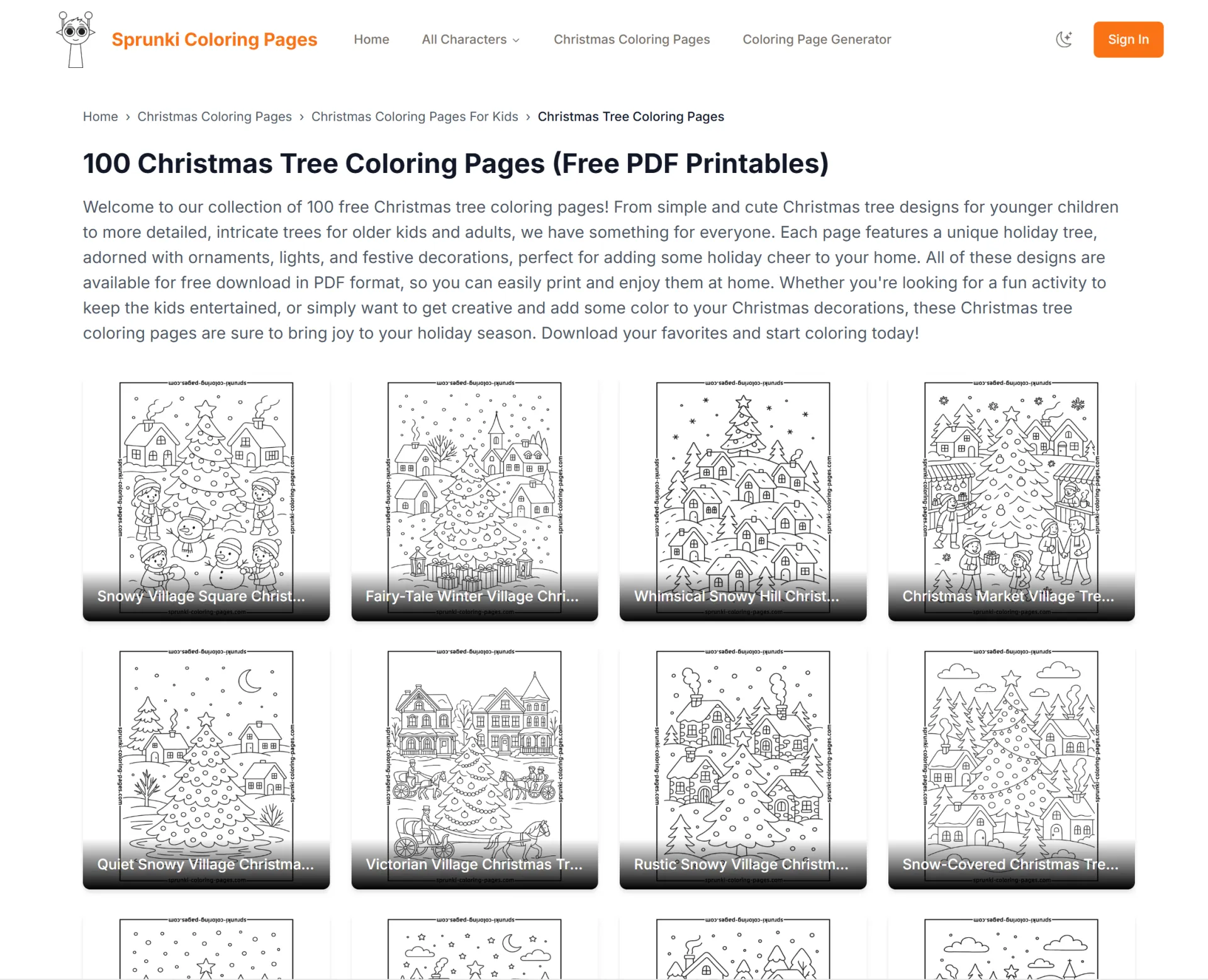

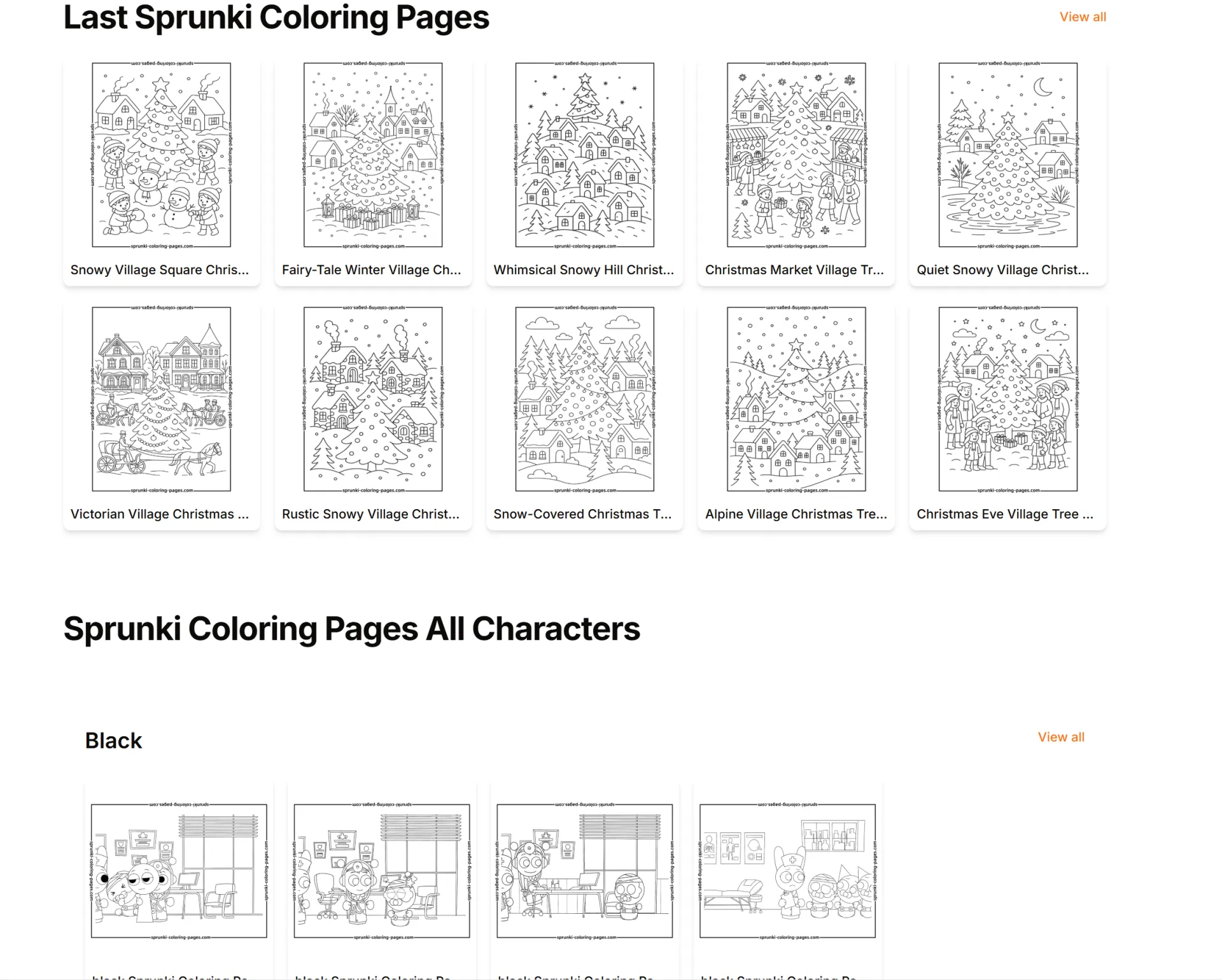
Hi everyone
I’m running a survey to help validate and develop my new edtech startup.
So far, I’ve tried:
- Sharing it on my personal LinkedIn
- Posting it on Survey Swap
- Sharing in relevant Reddit communities
- Hanging QR codes on a nearby college campus, yes really :)
I’d love to hear other creative ways to reach students, recent graduates, and class planners worldwide. Any tips, platforms, or approaches I might be missing?
Thanks so much for your help!
I initially created fullcountdown.com for myself (The first version was a simple big timer with play and pause, without any other options), to put it on a mini-screen I have next to my desk connected to my computer, where I usually put secondary things, such as YouTube videos, notes, and timers.
Before having it, I used some online timers, but none of them take advantage of the full screen size, they all adjust the numbers proportionally, which makes sense, nobody wants to distort text or numbers, I understand that perfectly, I'm a designer and nobody ever asks me to design something with distorted text...
But sometimes I prefer functionality over beauty, and in this case, I don't care if the numbers are distorted. I want the largest timer possible for my screen, and that's the concept I've been working on.
Right now, it's a functional concept, and I'll gradually improve the interface and design.
And all feedback are welcome! 🙂
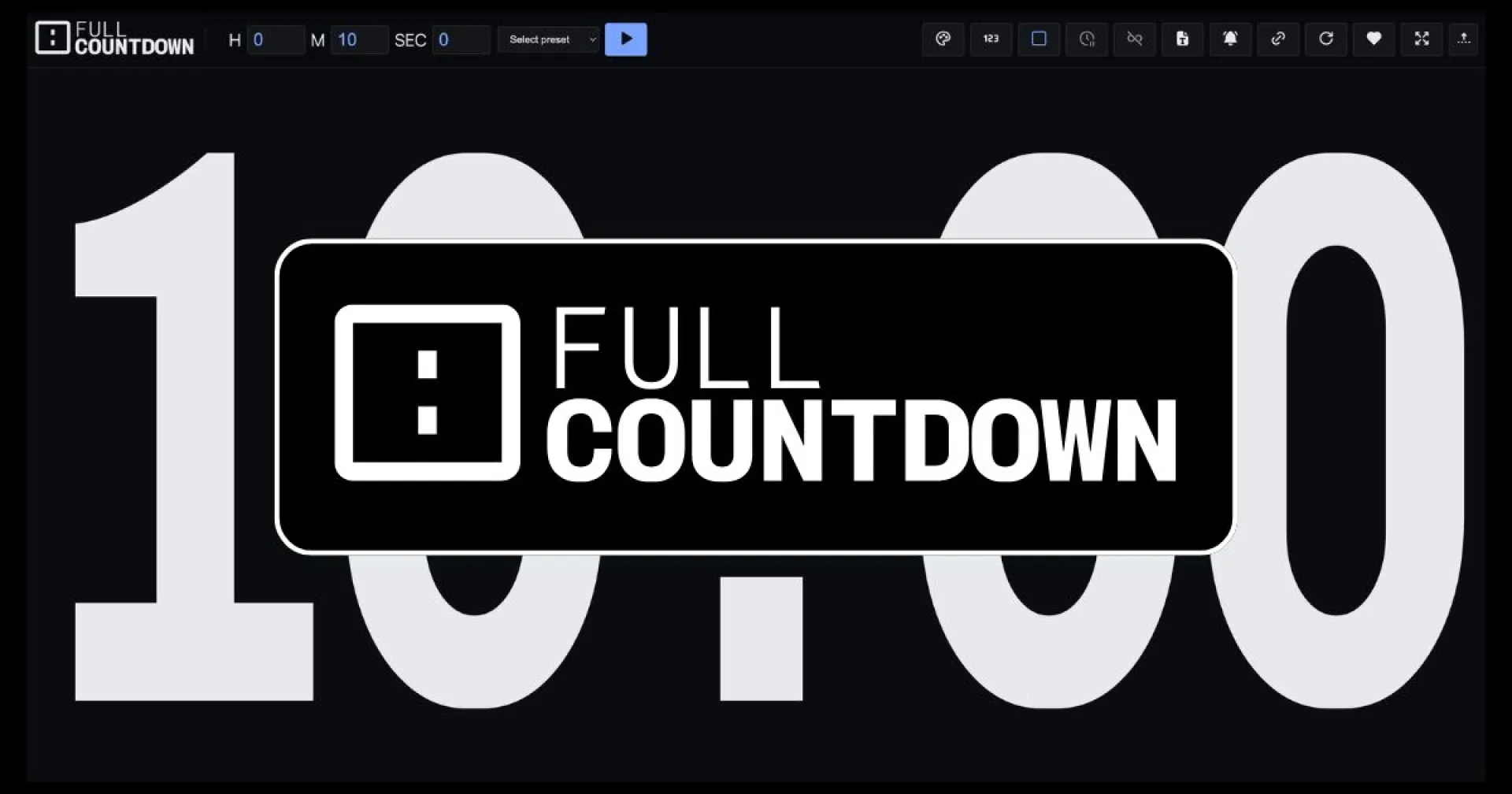
Hey there guys!
Hope you enjoy your week. And we just only start too. We launch next week. And I was wondering, do you believe that AI can help with mental health?
Recently launched my new app Opensmith.io
Opensmith allows you to easily compose product updates/ release notes based on your projects GitHub activity.
It already has some initial users. But I wanted to share it with this community and see if any of you have some feedback.
Any feedback would go a long way!
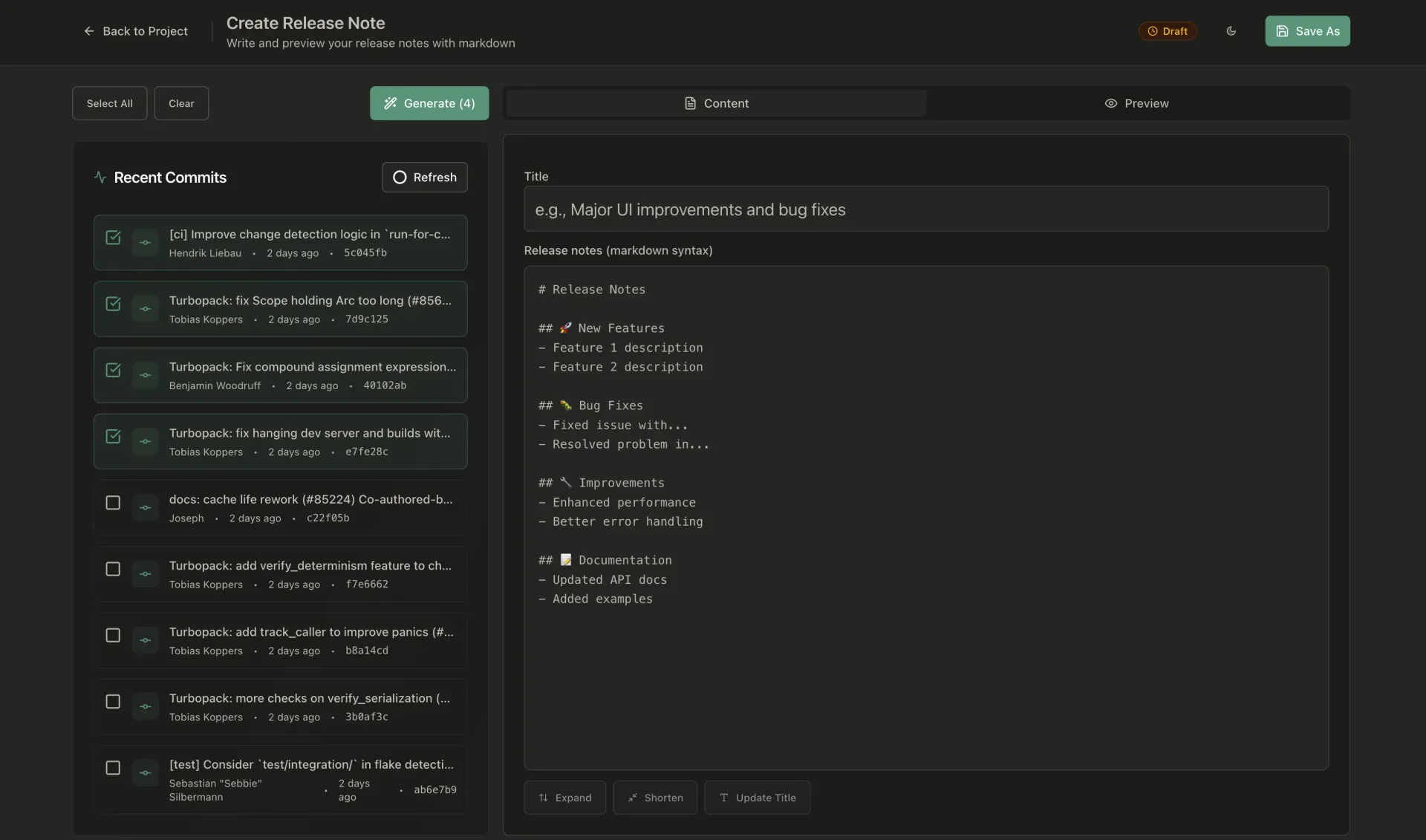
 $330/mo
$330/mo
Most developers may not know this.
OpenAI quietly sponsors up to 10 million free tokens every day if you enable data sharing in your API settings.
That’s roughly 5,000 pages of text daily, enough to power an entire product prototype or content engine — for free.
If your prompts don’t include sensitive data, this is the easiest way to run the GPT-5 API nearly cost-free.
How it works
Model TypeFree Tokens/Day (Tier 3–5 users)
Equivalent TextMini models (gpt-5-mini, 4.1-mini) -> 10M~5,000 pages
Main models (gpt-5, 4.1, o3) -> 1M~500 pages
For Tier 1–2 users, the limits are about 25% of that.
Activate in 3 Steps
1️⃣ Visit platform.openai.com → Settings → Organization → Data Controls
2️⃣ Under “Share inputs and outputs with OpenAI”, select Enabled for all projects
3️⃣ Click Save — your account is now enrolled
Your daily allowance refreshes automatically.
Why It Matters
For builders, that’s effectively free compute for:
- Rapid-fire idea testing
- Text generation pipelines
- Automated research or content workflows
Just remember: disable sharing for any project involving private or client data.

 $330/mo
$330/mo
Desperation fueled my growth
Last May was a turning point in my solopreneurial track.
I was making no money.
I knew that content marketing is crucial to succeed, but I observed a new trend; namely that of N8N. It has a low KD and high SV.
N8N started being a versatile tool for so many repetitive workflows from finding Reddit Leads to generating JSON-LD Schema Markups (which help you appear faster on AI).
These tools helped me increase by reach both as a problem solver and as a creator.
What is more, when someone pays you for a problem that is instant PMF validation.
Use Automation Appropriately
While I earned a small amount of money, I learned a valuable lesson.
Automate systems, not relationships.
Build trust manually, while you let machines handle the grunt work.
If you use generative AI in client-facing processes, such as outreach messaging, make sure you leave your personal touch in the process.
Sign up for the limited spot “AI as your colleague” if you wish to learn how to use AI as your collaborator. This program is for serious and experienced entrepreneurs.
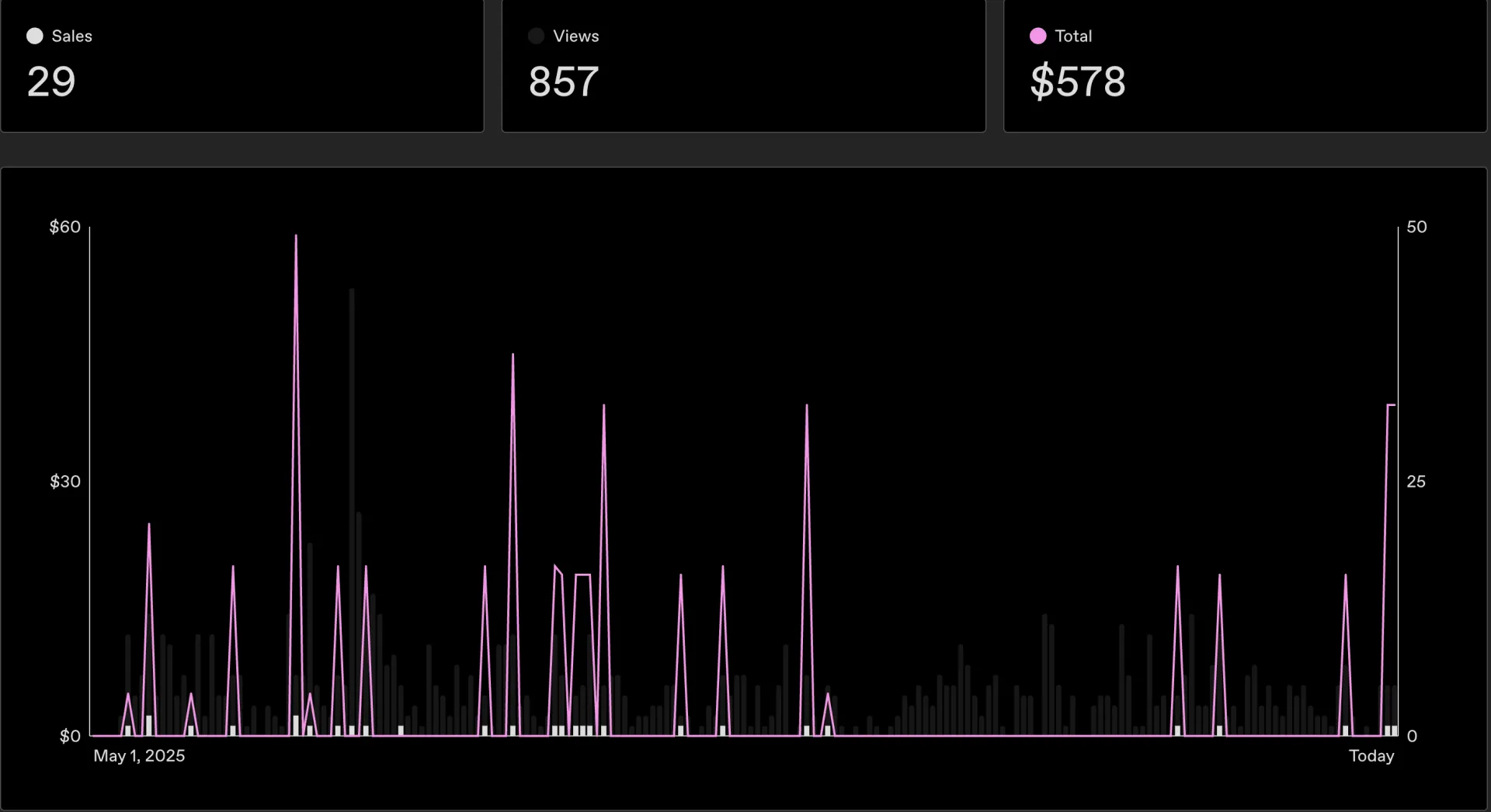
When you’re “building in public” but realize your users actually saw that bug you shipped live yesterday
Building in public sounded fun until I had to publicly admit nothing works yet.
Remember you could have the perfect SaaS and still be invisible to everyone, if Google can’t find you, no one can. Do not sleep on SEO guys! :)
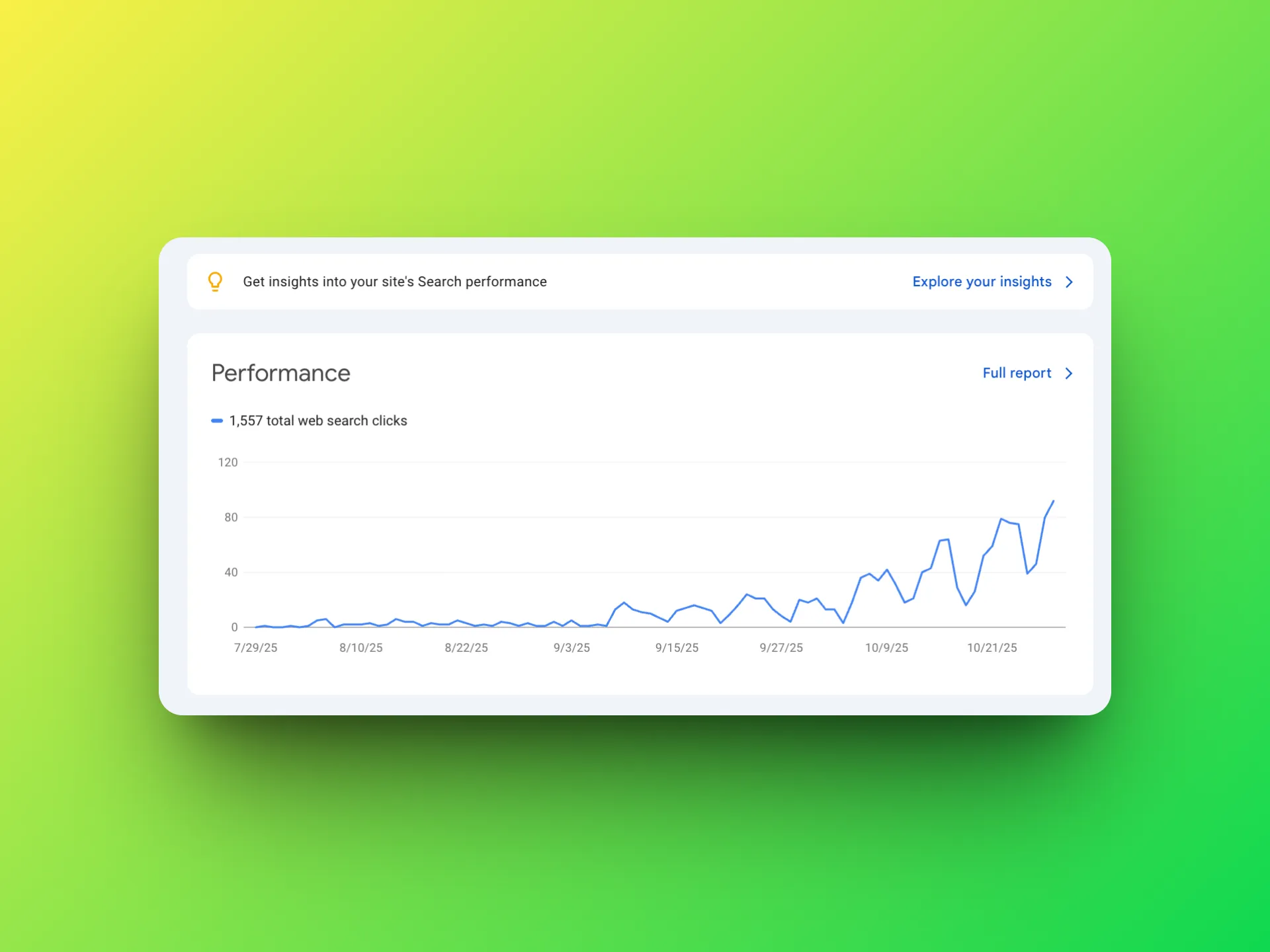
When you finally hit 1,000 users... and 998 of them are on the free plan.
Does anyone else lose entire afternoons to “accidental research” or “just checking something real quick.
I’m really curious, what’s one small thing that actually helps you stay focused or get back on track when your brain is all over the place?
Recently got into learning how to build a browser extension and came across WXT, a modern framework that a few creators recommended. I’ve been playing around with it for the past few days and it’s looking pretty solid so far.
What really stood out to me is how smooth the developer experience is. It’s built on top of Vite, supports TypeScript out of the box, and even hot-reloads your background and content scripts while you’re developing. The documentation is clear and well-structured, which made it easy to get something running quickly.
I’ll be shipping something interesting with it in the coming week. If you’re curious, check it out here (🙌highly recommended): https://wxt.dev/
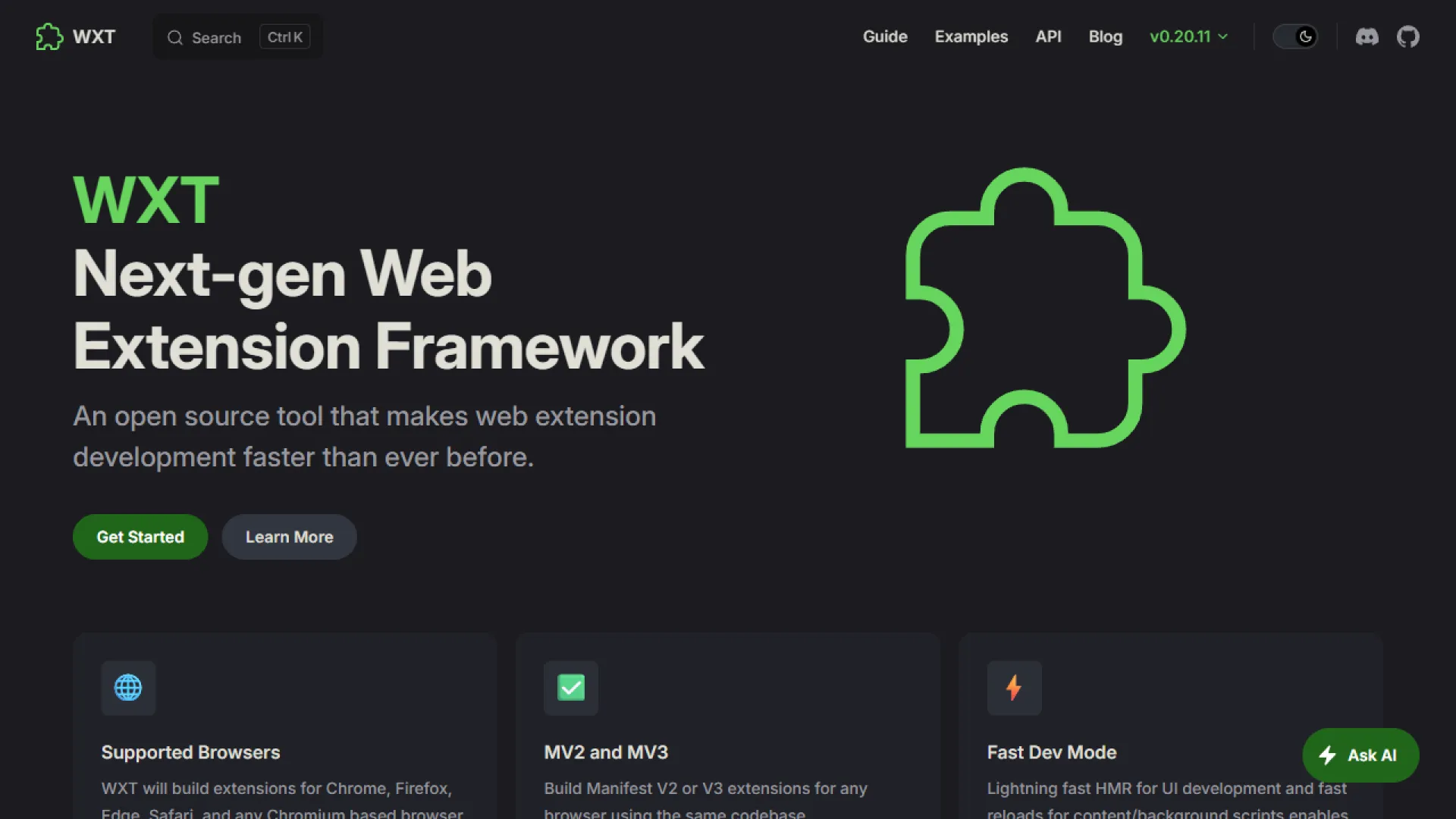
I work full-time in construction and spend my weekends learning to code. It’s slow but rewarding, and I’ve gained a real appreciation for how things work under the hood.
But with AI and vibe coding, I’m starting to wonder if learning to code manually is still the best path to build products.
When AI can handle most of the technical work, maybe the real skill is turning ideas into prompts.
I'm curious what other founders think. Is it still worth learning code, or is it smarter to start building products using AI?
How to find business ideas
Sooo… my projects have slowed down a bit, sold a few things, and now I’m hunting for new ideas. I was wondering how to find them, and I came up with a plan!
1️⃣ Go to Flippa
- Filter for sites making $10K+/month
- Pick a product idea that already has demand
- Check reviews
- Build something with better features
2️⃣ Go to Upwork
- Browse top gigs 💼
- See what people are actually paying for 💰
- Spot problems clients complain about 📝
- Build a solution that’s faster, cheaper, or just better 🚀
Haven’t found anything for me yet, but the method is super simple and maybe it’ll open someone’s eyes 👀
Quick update on NewsletterStack.
Yesterday I decided to stop hunting for new platforms to launch on and instead focused on engaging with my target audience on Reddit. Just replied to comments, answered questions, joined conversations.
What happened:
- Found a bug in the cost calculator. Some platforms weren't showing the right numbers when switching from monthly to yearly plans
- A user asked about GetResponse. It was already scheduled to go live, but I fast-tracked adding it to the cost calculator based on their request
- Had genuine conversations with newsletter creators about their platform choices
Sometimes the best QA comes from talking to people who are actually looking for a solution.
What's your take, launch everywhere or focus on connecting?🤔
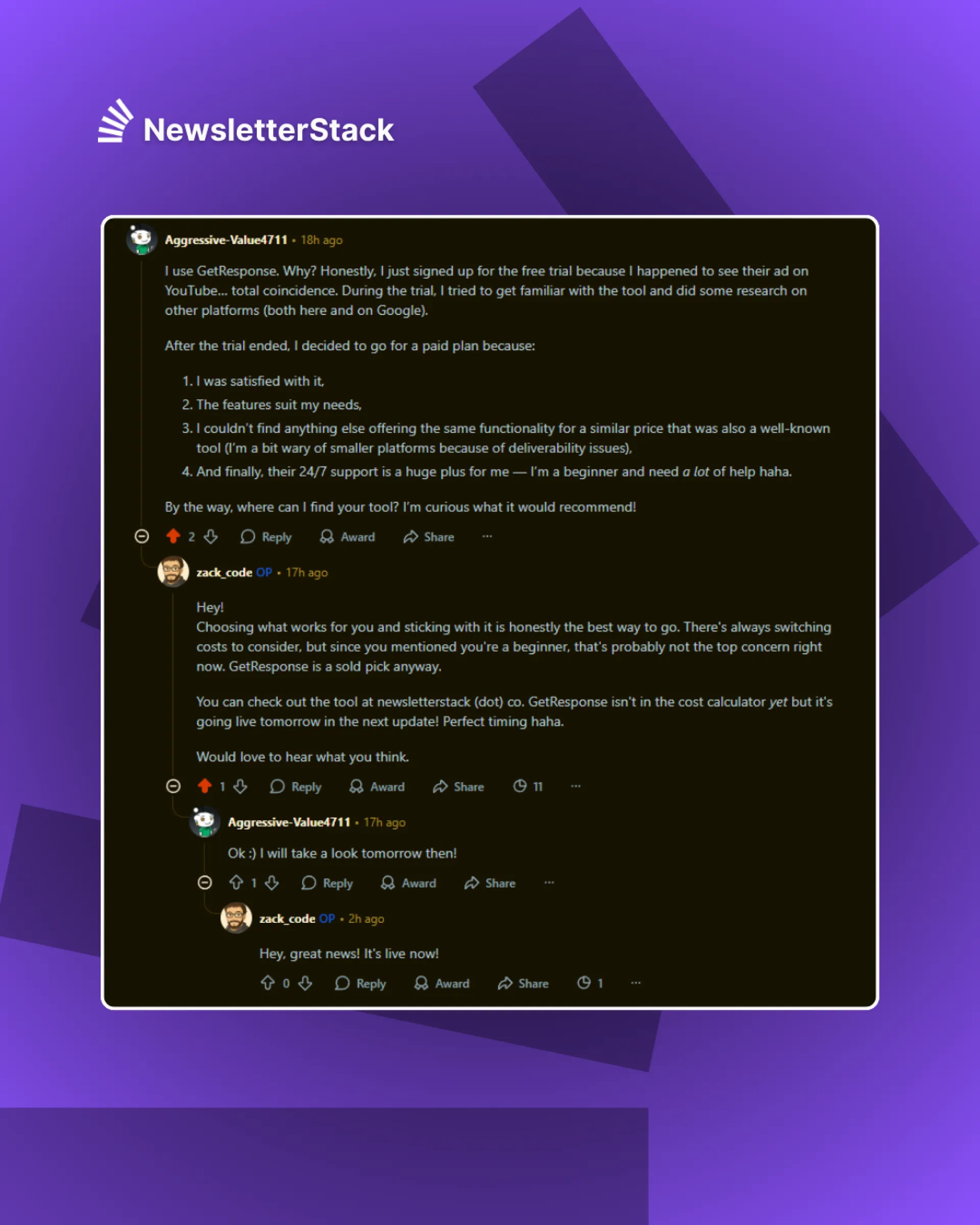
Been diving deep into newsletter platform pricing while building NewsletterStack, and honestly, the differences are wild.
Here's something I learned: if you're just starting out, Substack is genuinely the best choice. Why? It's completely free until you start charging subscribers. No upfront costs, no subscriber limits. You can build your audience without worrying about monthly fees.
But here's where it gets interesting. Once you hit around 5k-10k subscribers, the math changes completely. A platform that seems "cheap" at 1k subscribers might cost you hundreds more per month at scale.
And cost per subscriber isn't even the full picture. You need to consider:
- Email deliverability features
- Monetization options (paid subscriptions, ads, sponsorships, and more)
- Design flexibility and customization
- Analytics and growth tools
- Migration difficulty if you want to switch later (⚠️super important!!)
That's why I built a Newsletter Cost Calculator for NewsletterStack. Just enter your audience size and see real pricing across Beehiiv, Substack, Kit, Ghost, Buttondown, and more popular platforms, all in one place. Everything's up to date so you can actually compare apples to apples.
#BuildinPublic #NewsletterStack
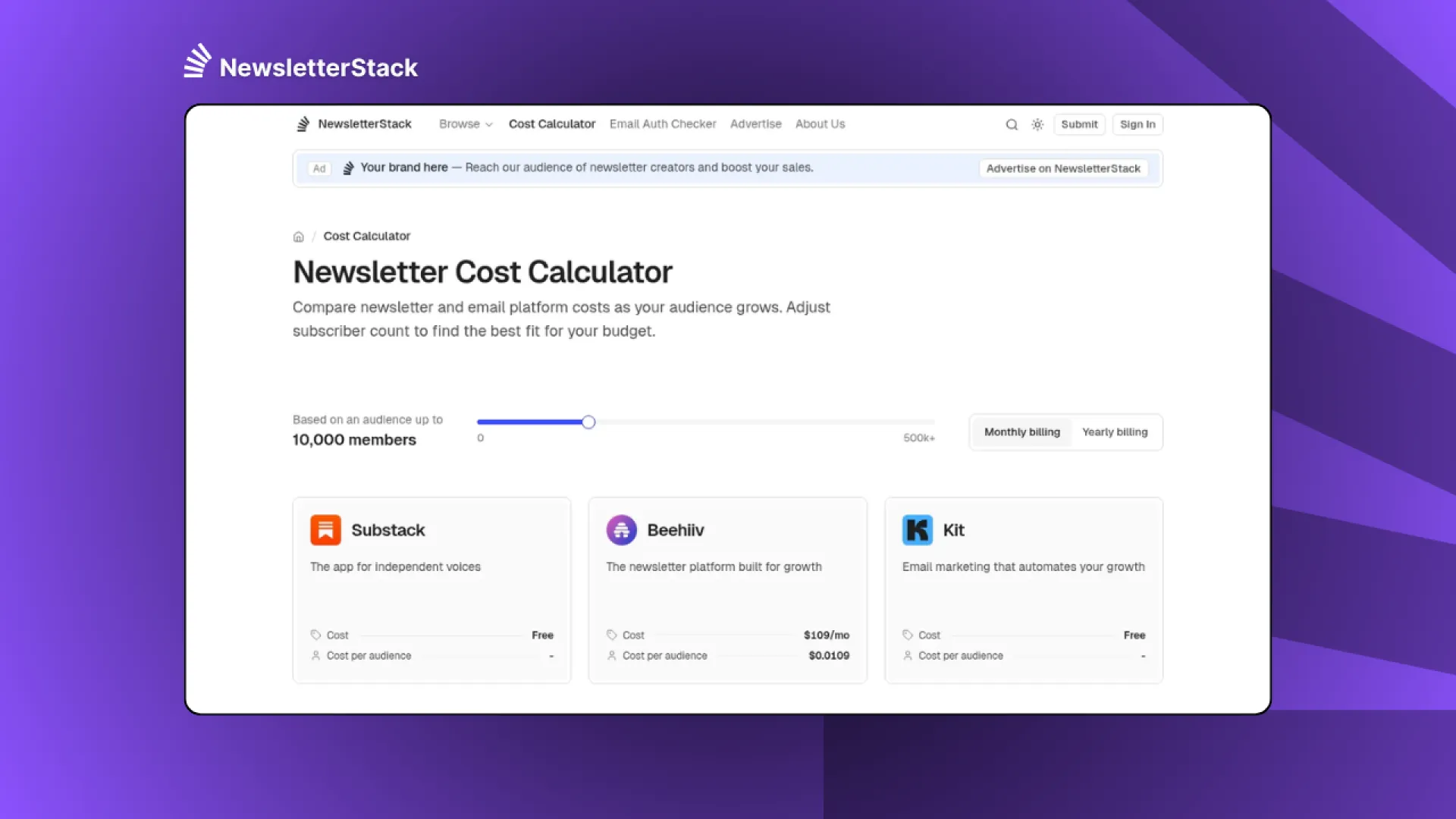
I spent the last few weeks building NewsletterStack – a curated directory where newsletter creators can discover the actual tech stacks behind successful newsletters. Not just tools, but real growth strategies, subscriber counts, and what actually works.
Just launched today 🚀
It's still early (plenty more newsletter case studies coming), but I'm excited to finally get it out there. If you're building a newsletter or thinking about starting one, hope this helps you find the right stack.
Would love your feedback. Some exciting features rolling out soon.
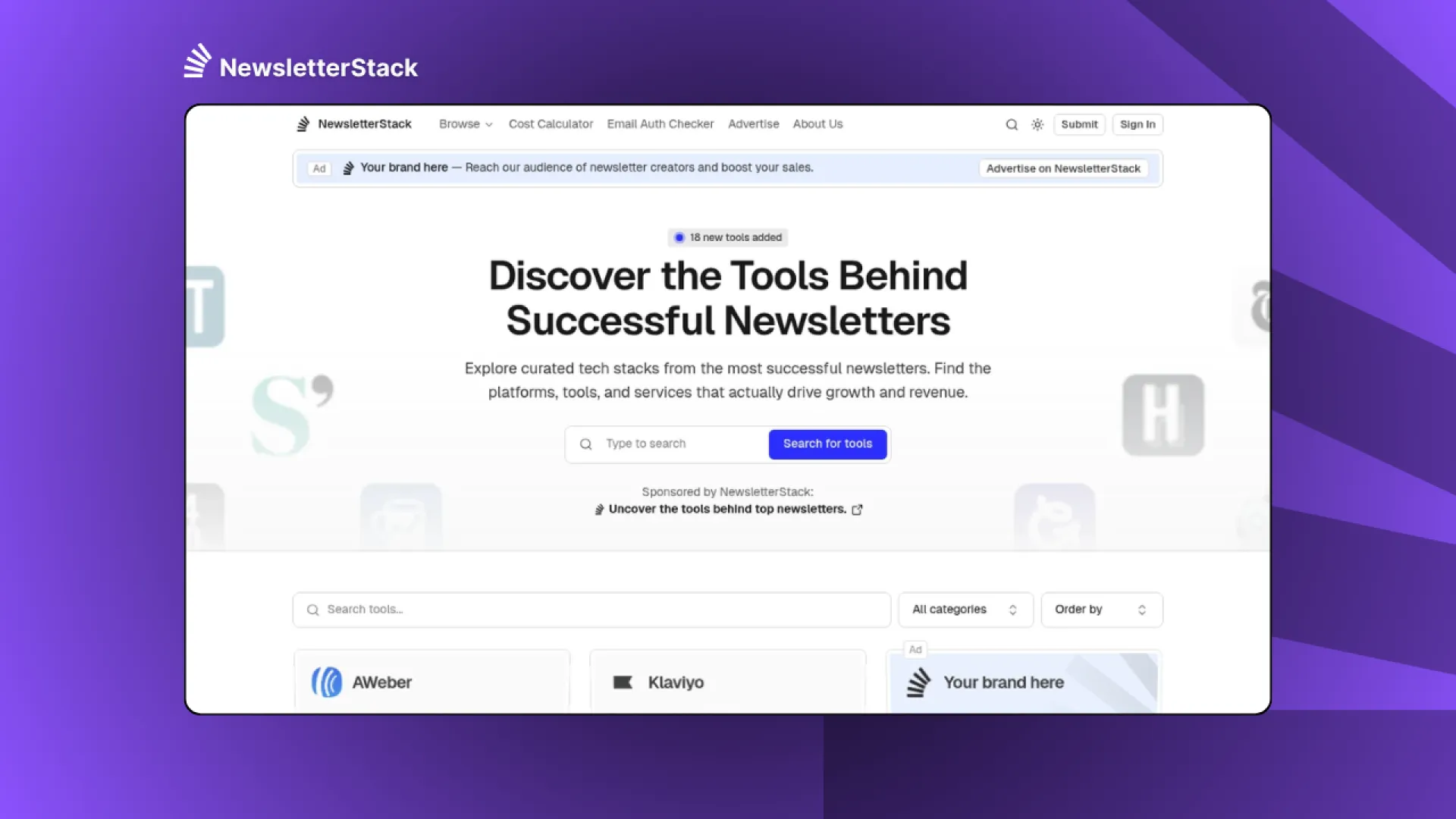
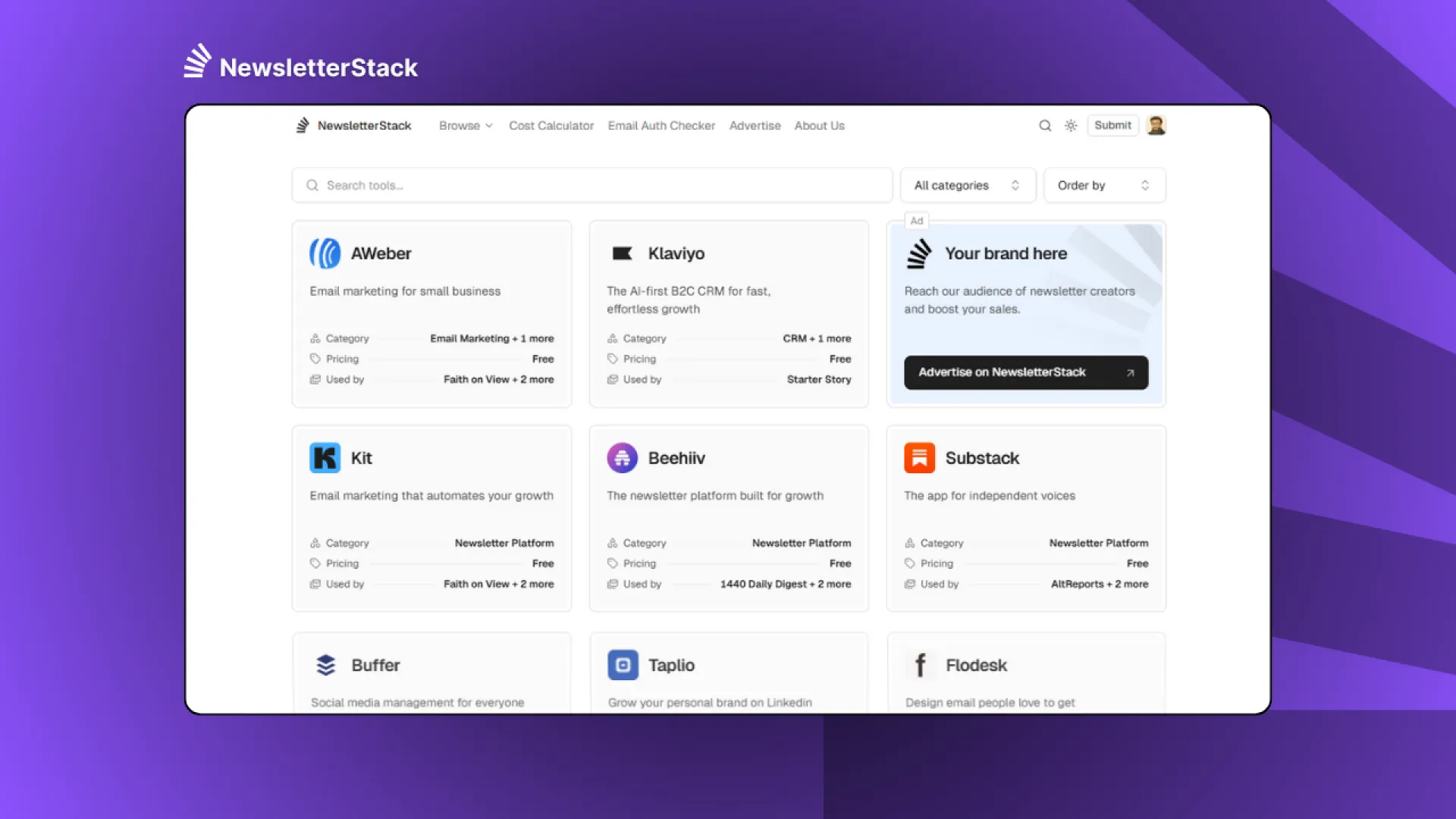
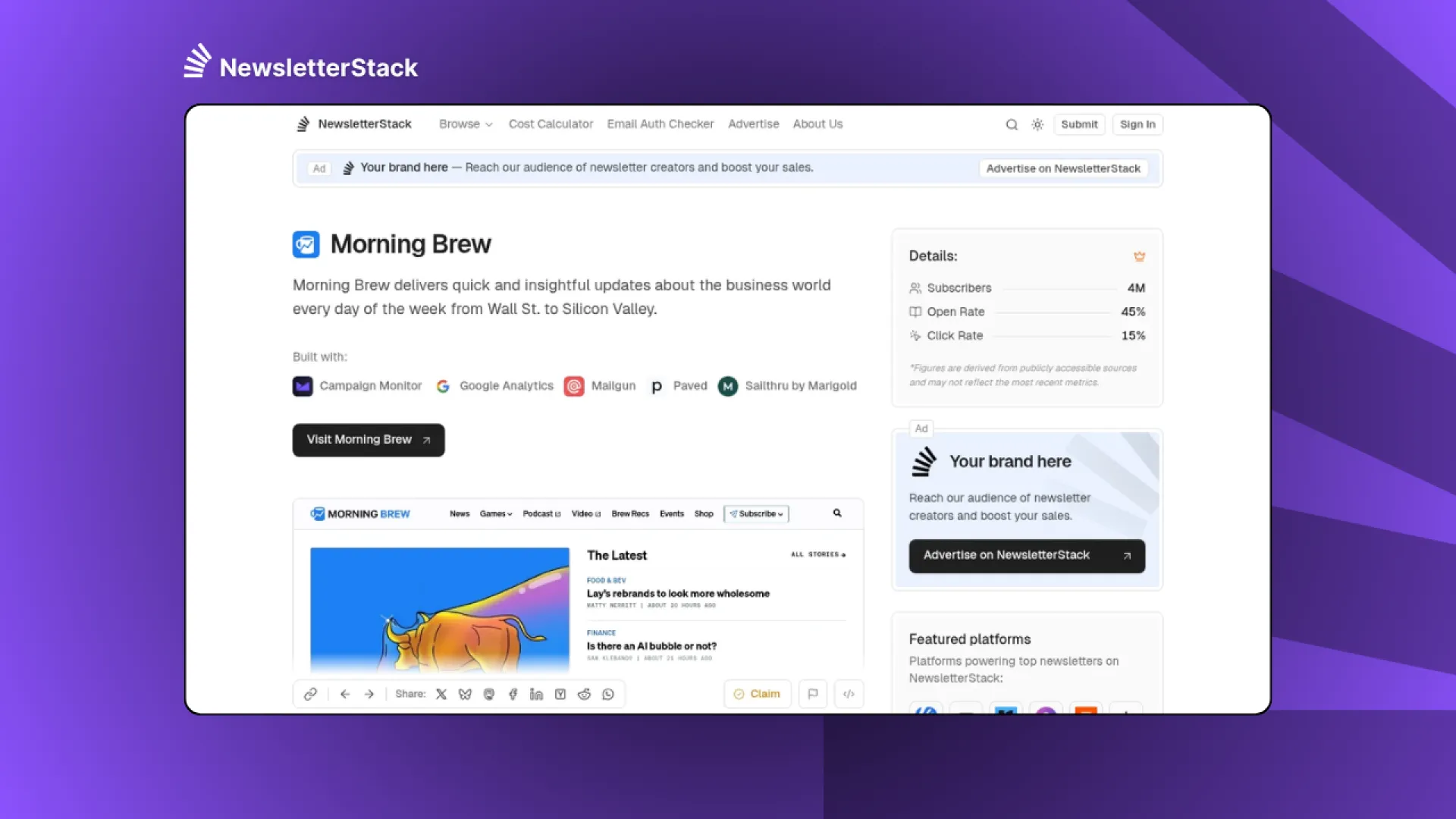
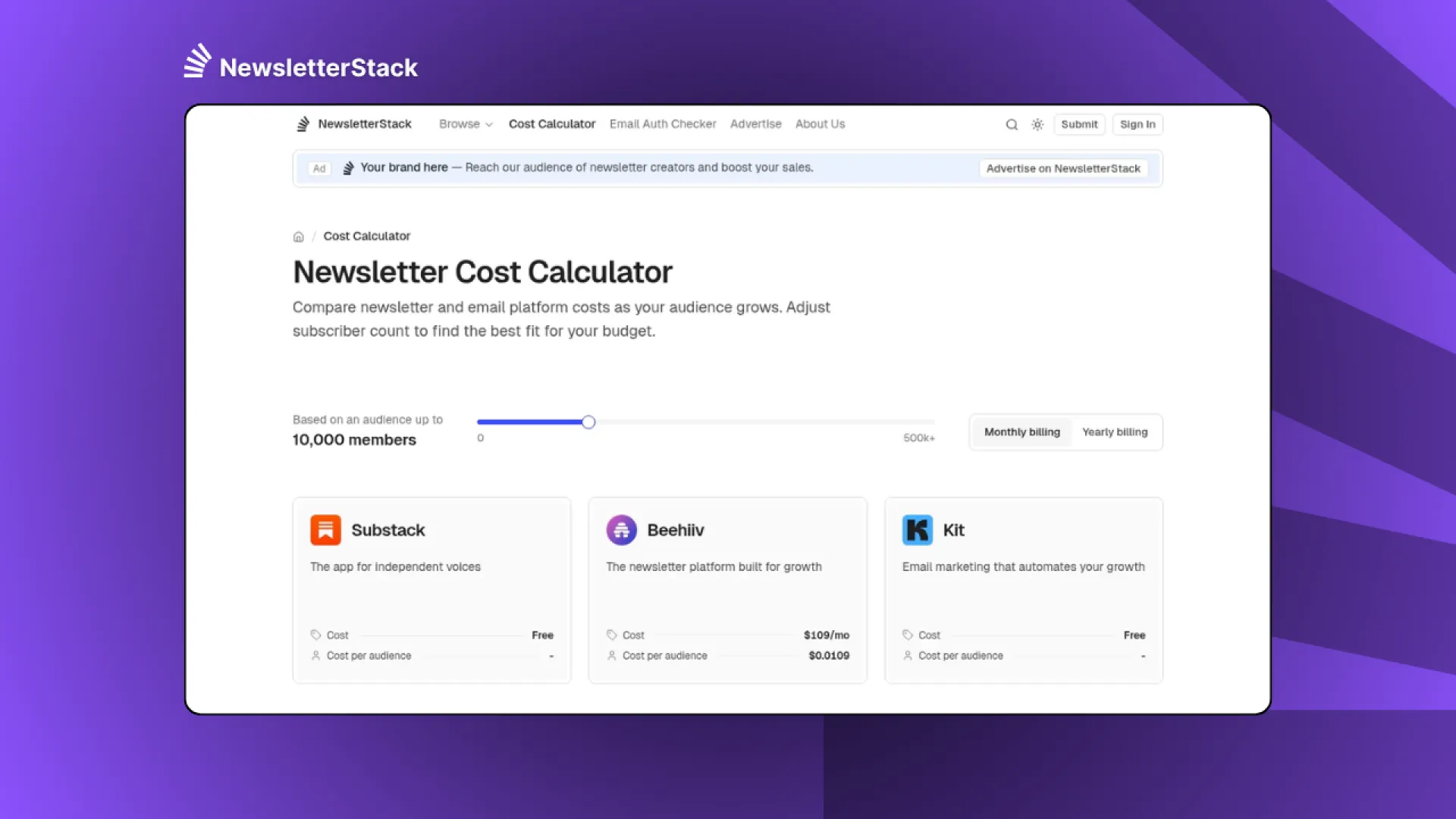
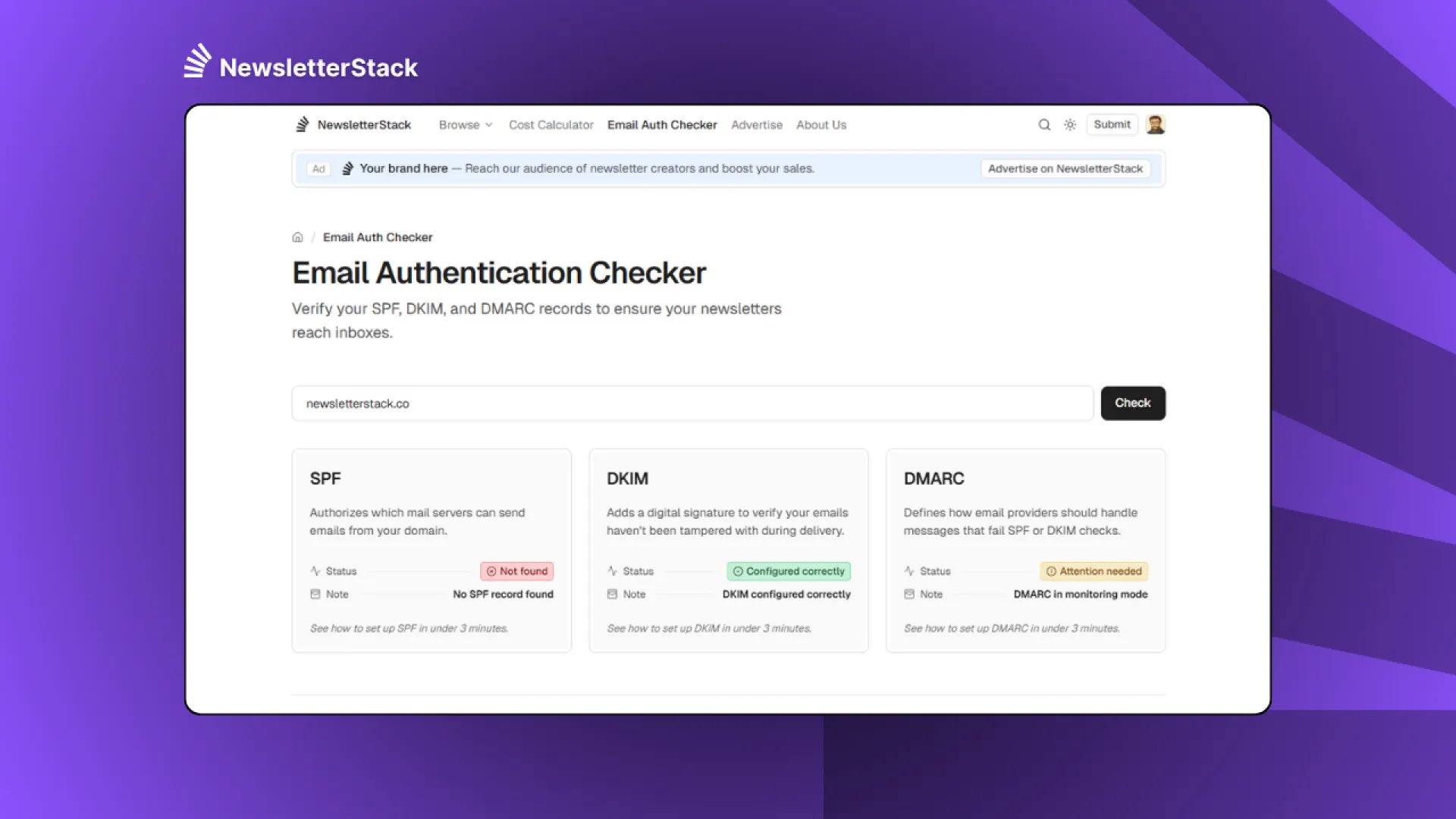
 $330/mo
$330/mo
We hustle daily, right?
One day is great, followed by several down days, at times.
But we keep building and eventually we earn trust.
I decided to share my ~ 3 year journey on Solopreneurship on Medium.
People loved it.
Why though?
I was a bit surprised, but then again in hindsight it makes sense.
People love reading about how to make money.
Just think of the algorithms that rule our life.
- I make $5K/day easy
- How to make $349 in 1 day
- etc.
The lists go on.
But as someone who lives in reality, I thought I'd share the hard truth behind solopreneurship and surprisingly how writing about it has resulted in a funnel for my freelancing services!
